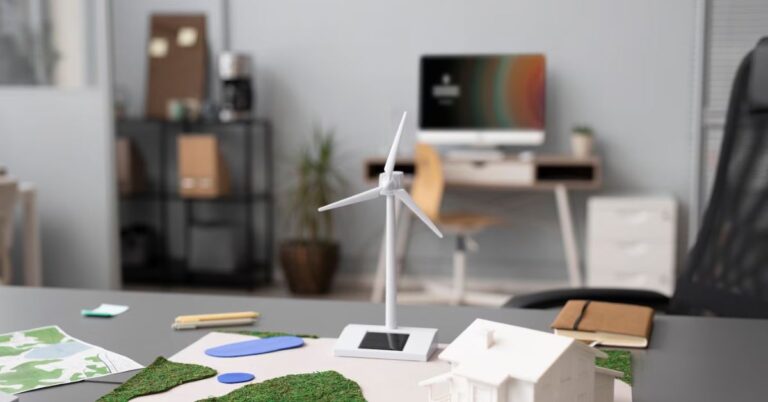As the world becomes more focused on environmental responsibility, homeowners are increasingly seeking ways to make their homes both sustainable and stylish. Whether you want to reduce your carbon footprint, lower energy bills, or simply create a healthier living environment, sustainable home improvements offer a fantastic opportunity to transform your space. As we look ahead to 2025, eco-friendly renovations are gaining momentum, and it’s easier than ever to make choices that benefit both your home and the planet. Let’s explore some of the best sustainable home improvements for 2025.
1. Energy-Efficient Windows and Insulation
One of the most impactful upgrades you can make to your home is improving its energy efficiency. Windows are a key area to address, as old, drafty windows can lead to significant heat loss in the winter and unwanted heat gain in the summer. Energy-efficient windows, often with double or triple glazing, help regulate your home’s temperature year-round, reducing the need for heating and cooling.
Insulation is another critical element in energy efficiency. Proper insulation in your attic, walls, and floors can help maintain a consistent indoor temperature and lower energy consumption. As we move into 2025, advanced insulating materials—such as spray foam or cellulose insulation—are becoming more affordable and effective. By making these upgrades, you can lower your carbon footprint and save money on energy bills.
If you’re considering these updates but don’t have the funds readily available, a home improvement loan could be an ideal way to finance the renovation. Many green financing options are available that specifically cater to energy-efficient upgrades, so be sure to explore your options.
2. Solar Energy Systems
Solar panels are one of the most popular eco-friendly home improvements, and their popularity is only expected to grow in the coming years. Solar power systems are now more efficient and affordable than ever, making it easier to harness the sun’s power to generate electricity for your home. Installing solar panels can significantly reduce your reliance on fossil fuels, and many utility companies offer rebates or tax incentives to help offset the cost.
Additionally, solar power increases your home’s value, which can be especially beneficial if you plan to sell in the future. As the technology continues to evolve, look for solar panels that integrate seamlessly into your home’s design, with sleek and aesthetically pleasing options now available.
3. Sustainable Flooring Options
The materials you choose for your home’s floors can have a significant environmental impact. Traditional hardwood flooring can contribute to deforestation, while synthetic flooring options may contain harmful chemicals that impact indoor air quality. Fortunately, many eco-friendly flooring alternatives are both beautiful and sustainable.
Bamboo is a popular choice for its rapid regrowth and durability. Cork flooring, made from the bark of cork oak trees, is another sustainable option that is naturally resistant to mold, mildew, and pests. For a more luxurious option, consider reclaimed wood flooring, which repurposes old wood from barns, factories, and other structures, giving it new life while reducing waste.
4. Water-Efficient Fixtures
Water conservation is an essential aspect of any sustainable home improvement. In 2025, you can expect more advanced water-saving technologies to become mainstream in home renovations. Low-flow faucets, showerheads, and toilets are becoming more efficient and stylish, helping homeowners conserve water without sacrificing performance.
Additionally, installing a greywater recycling system, which repurposes water from showers, sinks, and washing machines for irrigation or toilet flushing, can further reduce water usage. This investment saves water and reduces your home’s overall environmental impact.
5. Smart Home Technologies
Incorporating smart technologies into your home increases convenience and contributes to a more sustainable living environment. Smart thermostats, lighting, and appliances can optimize your home’s energy usage, reducing waste and ensuring that energy is only used when needed.
For example, a smart thermostat can learn your schedule and adjust your heating and cooling preferences, ensuring that your home is energy-efficient even when you’re not around. Similarly, smart lighting systems can turn off lights when rooms are unoccupied, and energy-efficient appliances, such as refrigerators and washing machines, can be controlled remotely to maximize efficiency.
6. Landscaping for Sustainability
Eco-friendly landscaping is another essential component of a sustainable home. By choosing native plants that are adapted to your local climate, you can reduce the need for excessive watering and fertilizer, which can have harmful environmental effects. Drought-resistant plants, for example, thrive with little water, saving both time and resources.
Consider installing a rainwater harvesting system, which collects rainwater from your roof and stores it for later use in your garden or lawn. This system reduces your water bill and ensures that you’re using water sustainably. Additionally, creating outdoor spaces that minimize waste and encourage biodiversity—like vegetable gardens or composting areas—adds both aesthetic and environmental value to your home.
7. Upcycling and Repurposing Materials
One of the most sustainable approaches to home improvement is upcycling. Repurposing materials saves money and reduces the amount of waste that ends up in landfills. For example, reclaimed wood can be used for furniture, cabinetry, or accent walls, while old doors and windows can be transformed into unique design pieces.
Upcycling doesn’t just apply to building materials—it can also include furniture and decor. Thrift stores, flea markets, and online marketplaces are great places to find secondhand items that can be restored and given new life. Not only does this help reduce waste, but it also adds character to your home’s design.
Conclusion
Sustainable home improvements are not just a passing trend—they’re the future of home renovation. In 2025, homeowners will continue to seek ways to reduce their carbon footprints, save energy, and create healthier living environments. The opportunities to upgrade your space sustainably are abundant, from energy-efficient windows to smart home technology. Whether you finance your renovation with a home improvement loan or fund it yourself, making eco-friendly choices will benefit the planet and improve your quality of life. By embracing these green renovations, you’ll be investing in a more sustainable, comfortable, and future-proof home.

